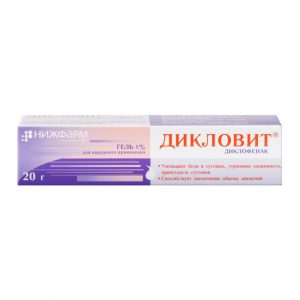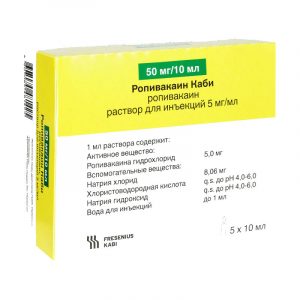Description
Pharmacological action
Combined preparation. The drug has an analgesic, antipyretic and psychostimulating effect. Acetylsalicylic acid has an antipyretic and anti-inflammatory effect, reduces pain, especially caused by the inflammatory process, and also moderately inhibits platelet aggregation and thrombosis, improves microcirculation in the focus of inflammation. Caffeine increases the reflex excitability of the spinal cord, excites the respiratory and vasomotor centers, dilates the blood vessels of the skeletal muscles, brain, heart, kidneys, reduces platelet aggregation, reduces drowsiness, a feeling of fatigue, and increases mental and physical performance. In this combination, caffeine in a small dose practically does not have a stimulating effect on the central nervous system, but it increases the tone of the vessels of the brain and accelerates blood flow. Paracetamol has an analgesic, antipyretic and extremely mild anti-inflammatory effect, due to its effect on the center of thermoregulation in the hypothalamus and mild ability to inhibit the synthesis of prostaglandins in peripheral tissues.
Indications
Coficil-Plus is used in adults with mild to moderate pain (of various origins): headache migraine toothache neuralgia myalgia arthralgia algomenorrhea (pain during menstruation). In adults and children over 15 years of age to reduce elevated body temperature, with colds and other infectious and inflammatory diseases.
Contraindications
children under 15 years of age increased individual sensitivity to the components of the drug erosive and ulcerative lesions of the gastrointestinal tract (in the acute phase) gastrointestinal bleeding increased tendency to bleeding complete or incomplete combination of bronchial asthma, recurrent nasal polyposis and ocular polyposis intolerance to acetylsachicylic acid or other non-steroidal anti-inflammatory drugs (including a history of) hemorrhagic diathesis (hemophilia, von Willebrand disease, telangiectasia, hypoprothrombinemia, thrombocytopenia, thrombocytopenic purpura) exfoliating aortic aneurysm portal hypertension vitamin K deficiency glucose-6-phosphate dehydrogenase deficiency severe arterial hypertension severe coronary heart disease glaucoma increased irritability of sleep disorders surgical interventions, accompanied by bleeding. Precautions: hyperuricemia, urate nephrolithiasis, gout, peptic ulcer and / or duodenal ulcer (history), severe heart failure, liver disease, old age.
Special instructions
The drug is not prescribed as an analgesic for adolescents under 18 years old, as an antipyretic agent for children 15 years old with acute respiratory infections caused by viral infections due to the risk of developing Reye’s syndrome (encephalopathy and acute fatty dystrophy with acute development of liver failure). With prolonged use of the drug, control of peripheral blood and the functional state of the liver is necessary. Since acetylsalicylic acid slows down blood coagulation, the patient, if he has surgery, must warn the doctor in advance about taking the drug. Acetylsalicylic acid in low doses reduces uric acid excretion. In patients with an appropriate predisposition, this can in some cases provoke an attack of gout. During treatment, ethanol should be abandoned (increased risk of gastrointestinal bleeding). Effect on the ability to drive vehicles and control mechanisms When ingested in high doses (up to 8 tablets per day), caffeine, which is part of the drug, makes it difficult to concentrate, therefore, it is necessary to refrain from driving vehicles and engaging in potentially dangerous activities that require an increased concentration of attention and speed of psychomotor reactions.
Composition
Tablets 1 tab. acetylsalicylic acid 300 mg paracetamol 100 mg caffeine 50 mg
Dosage and administration
The drug is used orally after a meal. To reduce the irritating effect on the gastrointestinal tract, the drug should be taken with water, milk, alkaline mineral water. 1 tablet every 4 hours, with pain – 1-2 tablets, the average daily dose is 3-4 tablets, the maximum daily dose is 8 tablets. The drug should not be taken for more than 5 days as an analgesic drug and more than 3 days as an antipyretic (without prescribing and monitoring a doctor). Other doses and regimens are prescribed by your doctor. The drug is not prescribed as an analgesic for adolescents under 18 years old, as an antipyretic agent for children under 15 years old with acute respiratory infections caused by viral infections due to the risk of Reye’s syndrome (encephalopathy and acute fatty liver with acute development of liver failure).
Side effects
Gastralgia, nausea, vomiting, hepatotoxicity, nephrotoxicity, erosive and ulcerative lesions of the gastrointestinal tract, allergic reactions (including Stevens-Johnson syndrome, Lyell), tachycardia, increased blood pressure, bronchiasis. Reye’s syndrome in children (hyperpyrexia, metabolic acidosis, disorders of the nervous system and psyche, vomiting, impaired liver function). Dizziness, headache, visual disturbances, tinnitus, decreased platelet aggregation, hypocoagulation, hemorrhagic syndrome (nosebleeds, gum bleeding, purpura, etc.), kidney damage with papillary necrosis of deafness.
Overdose
Symptoms due to acetylsalicylic acid: with light intoxications – nausea, vomiting, gastralgia, dizziness, tinnitus severe intoxication – lethargy, drowsiness, collapse, convulsions, bronchospasm, difficulty anuria, bleeding. Initially, central hyperventilation of the lungs leads to respiratory alkalosis (shortness of breath, suffocation, cyanosis, perspiration). As toxicity intensifies, progressive respiratory paralysis and dissociation of oxidative phosphorylation cause respiratory acidosis. Symptoms due to paracetamol: during the first 24 hours after administration – pallor of the skin, nausea, vomiting, anorexia, abdominal pain, impaired glucose metabolism, metabolic acidosis. Symptoms of impaired liver function may appear 12-48 hours after an overdose. In severe intoxication – liver failure with progressive encephalopathy, coma, death, acute renal failure with tubular necrosis (including in the absence of severe liver damage) arrhythmia, pancreatitis. Chronic Overdose: Symptoms, caused by acetylsalicylic acid: with prolonged use – dizziness, headache, visual impairment, tinnitus, decreased platelet aggregation, hypocoagulation, hemorrhagic syndrome (nosebleeds, gum bleeding, purpura and others), kidney damage with papillary necrosis, deafness. Symptoms due to paracetamol: with prolonged use in high doses, hepatotoxic and nephrotoxic effects are possible (renal colic, hemolytic anemia, aplastic anemia, methemoglobinemia, pancytopenia). Hepatotoxic effect in adults is manifested when taking 10 g or more. Treatment: constant monitoring of changes in the parameters of the acid-base state (CBS) and electrolyte balance depending on the state of metabolism – the introduction of sodium bicarbonate, sodium citrate or sodium lactate. Increasing reserve alkalinity enhances the elimination of acetylsalicylic acid due to alkalization of urine. In the presence of liver damage, donors of SH groups and precursors of glutathione synthesis, methionine, are administered within 8-9 hours after an overdose and acetylcysteine within 8 hours. The need for additional therapeutic measures (further administration of methionine, intravenous administration of acetylcysteine) is determined depending on the concentration of paracetamol in the blood, as well as on the time elapsed after its administration. If any of the side effects indicated in the instructions are aggravated, or if you notice any other side effects not listed in the instructions, inform your doctor.
Storage conditions
In a dry, dark place at a temperature of no higher than 25 ° C. Keep out of the reach of children.
Expiration
2 years.
Terms and conditions
without prescription
Formulation
tablets



